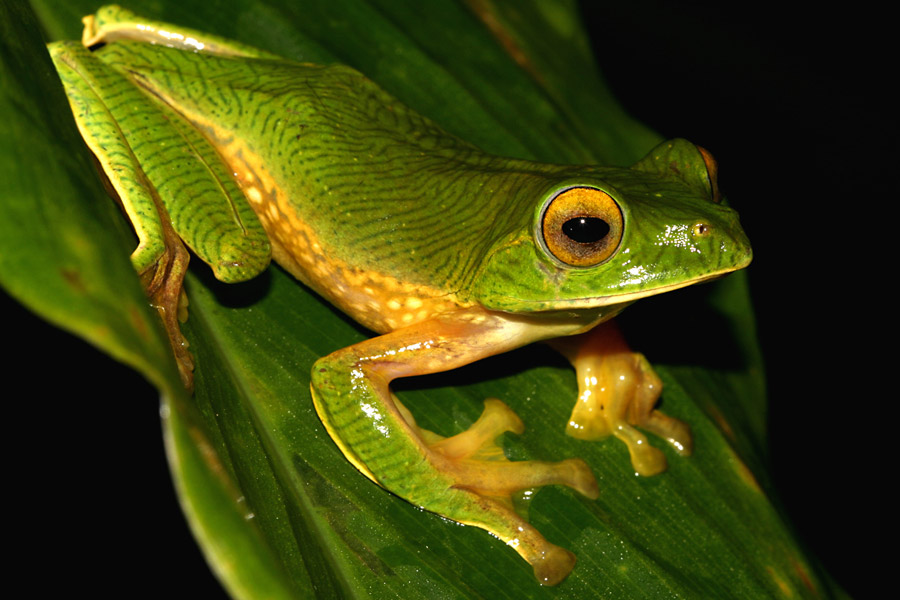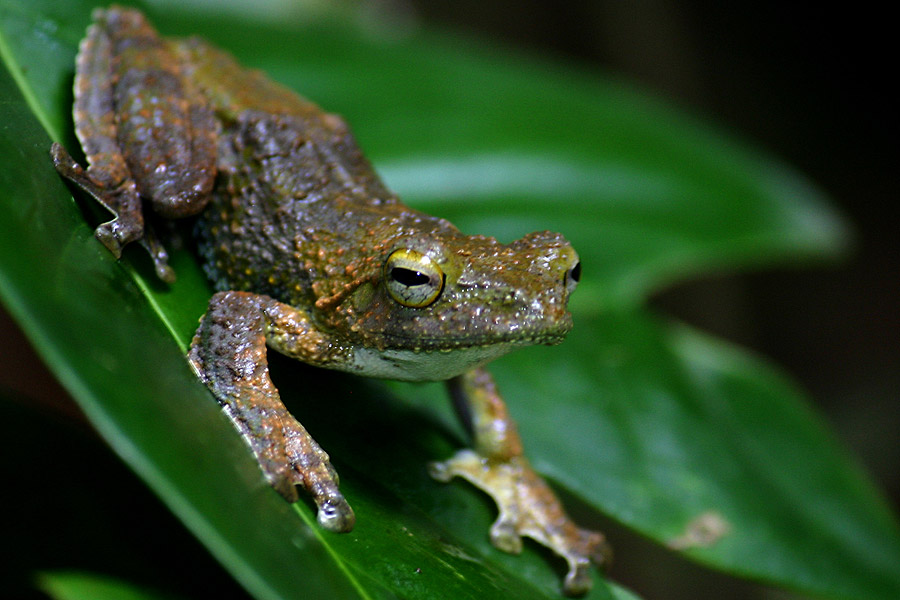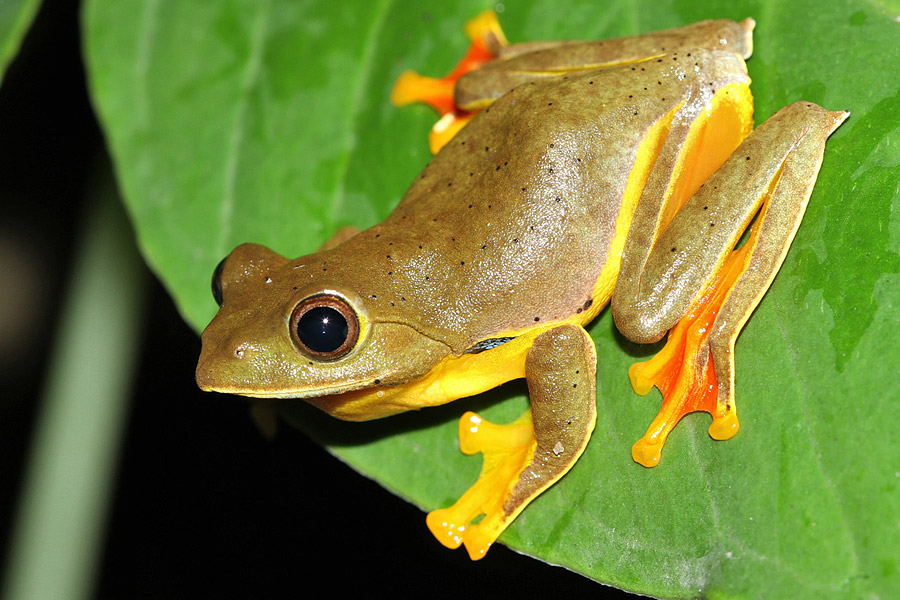Gliding frogs of the genus Rhacophorus are a unique and spectacular group in the arboreal frog family Rhacophoridae. These tree dwelling frogs are one of diverse and the oldest group, globally. They began to radiate about 50-60 million years ago (between Paleocene to Oligocene) and are distributed largely in South and S. E. Asia, and Africa. The rapid diversification occurred just about the time in which modern day angiosperm plants diversified (Roelants et al. 2007).
In India, there are currently 13 valid species with four species viz., Rhacophorus malabaricus, R. pseudomalabaricus, R. lateralis and R. calcadensis endemic to the Western Ghats (Dinesh et al. 2013). R. maximus, and R. bipunctatus are two of the prominent frogs in Northeast India. In general, the size of these frogs is large (40-90 mm). Skin colour is variable from green in (R. malabaricus) to yellowish green in (R. lateralis) and yellowish orange (R. bipunctatus) to brownish green with ornamentations (R. calcadensis).
A distinct characteristic of these frogs is the highly developed webbing in hands and feet. Presumably, it comes handy when the frogs glide from one tree to another. These frogs are very good climbers and comfortably walk on twigs and tree trunk on all fours. They have dilated finger tips which act like suction cups, useful for a life among leaves on trees, sometimes as high as a 100 ft.
KS Seshadri, an ecologist studying amphibian ecology in the Western Ghats, helped compile this report.
(Visited 2,891 times, 1 visits today)

Rhacophorus malabaricus -- Large sized frog with elongated body, greenish color on the body and bright red webbing in hands and feet characterize this frog. The most common of all Rhacophorids, distributed from Amboli in the north to Ponmudi in Kerala.

R. pseudomalabaricus -- Large sized frog, elongated body, green colored body with blue striations characterizes this frog which was described only in 2000. It has a very narrow geographic distribution limited by Palghat Gap on the north and Shenkottah gap on the south.

R. lateralis -- Relatively small size, greenish-brown body coloration with two yellow lateral lines are key identification characters. This frog was described in 1883 and was not reported till over a 100 yrs later. Currently, they are known from several localities in the Western Ghats.

R. calcadensis -- Brown colored body with ornamentations characterize this frog. They have a patchy distribution in Agasthyamalai Hills, Anamalais and Cardamom Hills in Southern Western Ghats.

R. bipunctatus -- Commonly known as the twin spotted frog, it is characterized by bluish black spots in the armpits and bright yellow colored hands and limbs. Inhabits forests of N. E India about 1000 m and is found through Burma, Thailand, Peninsular Malysia and Indochina.

R. maximus -- Is among the largest of rhacophorids, green body with white undersides and a white line extending from lips to the groin is characteristic of this species. Inhabits lowland to mid elevation evergreen forests of Nepal, Bhutan, Bangladesh, India and Yunan province of China.
About the author
David Raju
The author works as a naturalist in a wildlife safari lodge in Central India. He has a special interest in birds, amphibians, dragonflies and butterflies.
Comments







 CI is a non-profit, non-commercial portal that aims to facilitate wildlife and nature conservation by providing reliable information and the tools needed to campaign effectively.
CI is a non-profit, non-commercial portal that aims to facilitate wildlife and nature conservation by providing reliable information and the tools needed to campaign effectively.
Chosen as 'Picture of the Week'
Gliding frogs are a unique and spectacular group in the arboreal frog family Rhacophoridae. In India, there are currently 13 species of which four are endemic to the Western Ghats.